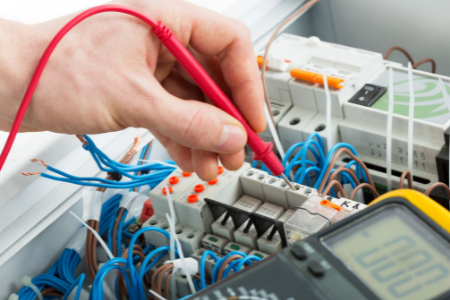When a household appliance breaks down, homeowners are faced with a difficult decision: whether to repair the appliance or replace it altogether. This decision has wide-reaching implications, not just for the household budget but also for the environment and even the local economy. In this comprehensive guide, we'll explore in detail the pros and cons of repairing versus replacing appliances.
Repairing Appliances
Pros of Repairing Appliances
1. Cost-Effective
A. Short-Term Savings: Often, the immediate cost of repairing an appliance is lower than replacing it. This section can delve into the costs of common repairs, comparing them with the costs of new appliances.
B. Long-Term Considerations: Sometimes, consistent minor repairs over time can extend the life of an appliance without significant investment. We can explore various scenarios where this would apply.
2. Environmental Impact
A. Reducing Waste: By repairing appliances, we reduce waste going to landfills, contributing to a more sustainable future.
B. Energy and Resource Conservation: This section can explore how repairs can save resources and energy that would have been used in manufacturing new appliances.
3. Preserving Sentimental Value
A. Emotional Connection: Many people have an emotional connection to their appliances. Exploring this connection and how it impacts the decision-making process can provide valuable insights.
B. Historic and Antique Appliances: For those who own vintage appliances, repair might be the only option to preserve the original integrity and appearance.
4. No Learning Curve
A. Ease of Continuity: This section can detail how keeping the same appliance provides a seamless experience, with no need to adapt to new technology or functions.
Cons of Repairing Appliances
1. Potential for Recurring Issues
A. Temporary Solutions: Delving into scenarios where repairs may only act as a temporary fix, leading to ongoing costs.
B. Age of the Appliance: We can discuss how the life expectancy of various appliances influences the decision to repair or replace.
2. Availability of Parts
A. Sourcing Challenges: This section can describe the difficulties in finding parts for older models, especially for brands that are no longer in business.
B. Cost of Parts: Sometimes, the cost of parts can make repairs less appealing. An analysis of common parts and their costs would fit well here.
3. Time-Consuming
A. DIY vs Professional Repairs: Exploring the time and skill required for both DIY and professional repairs.
B. Waiting for Parts: Detailing the potential delays due to ordering parts, especially for older or uncommon models.
Replacing Appliances
Pros of Replacing Appliances
1. New Features and Efficiency
A. Technology Advancements: Exploring the advancements in technology, from smart features to energy efficiency.
B. Energy Savings: This section can detail how new energy-efficient appliances can lead to long-term savings on energy bills.
2. Warranty Coverage
A. Manufacturer's Warranty: Discussing the benefits of a new warranty and how it offers protection for future issues.
B. Extended Warranties: Exploring options for extended warranties and how they can provide additional peace of mind.
3. Aesthetics
A. Modern Design: How replacing an appliance can give a fresh, updated look to your home.
B. Matching Appliances: Discussing the benefits of having a cohesive look with matching appliances.
4. Potential for Rebates and Discounts
A. Manufacturer Rebates: Detailing various rebate programs offered by manufacturers.
B. Government Incentives: Exploring government incentives for purchasing energy-efficient appliances.
Cons of Replacing Appliances
1. Higher Upfront Cost
A. Initial Investment: Analyzing the initial financial investment required for various types of new appliances.
B. Financing Options: Discussing various financing options that may be available but can also add to the total cost.
2. Environmental Impact
A. Manufacturing Impact: Delving into the environmental costs of manufacturing new appliances.
B. Disposal Challenges: Discussing responsible disposal of old appliances and the environmental implications.
3. Time and Effort to Choose
A. Researching Options: Detailing the time and effort required to research and choose the right appliance.
B. Installation Considerations: Discussing the logistics and potential difficulties in installing new appliances.
4. Potential Waste of a Still-Usable Appliance
A. Responsible Disposal: Exploring options for recycling or donating old appliances.
B. Lost Potential: Discussing scenarios where replacing an appliance might lead to unnecessary waste when it still had usable life.
Specific Considerations for Various Appliances
A. Refrigerators: Repairing vs replacing considerations specific to refrigerators.
B. Washing Machines and Dryers: Details specific to laundry appliances.
C. Ovens and Stovetops: Considerations for cooking appliances.
D. Small Appliances: How the decision might differ for small kitchen appliances like toasters, blenders, etc.
Economic Considerations
Discussing how the repair or replacement of appliances can affect the local economy, including supporting local repair businesses versus large manufacturers.
Environmental and Ethical Considerations
A more profound look at the environmental and ethical implications of the decision, considering the full life cycle of appliances.
Conclusion
Summarizing the factors involved in deciding whether to repair or replace an appliance, offering guidance on how to weigh these factors based on individual needs and values, and concluding with suggestions for further resources or professional consultation.
By diving deeper into each of these areas, we can create a comprehensive guide that thoroughly explores the topic, providing readers with all the information they need to make informed decisions about repairing or replacing appliances.





